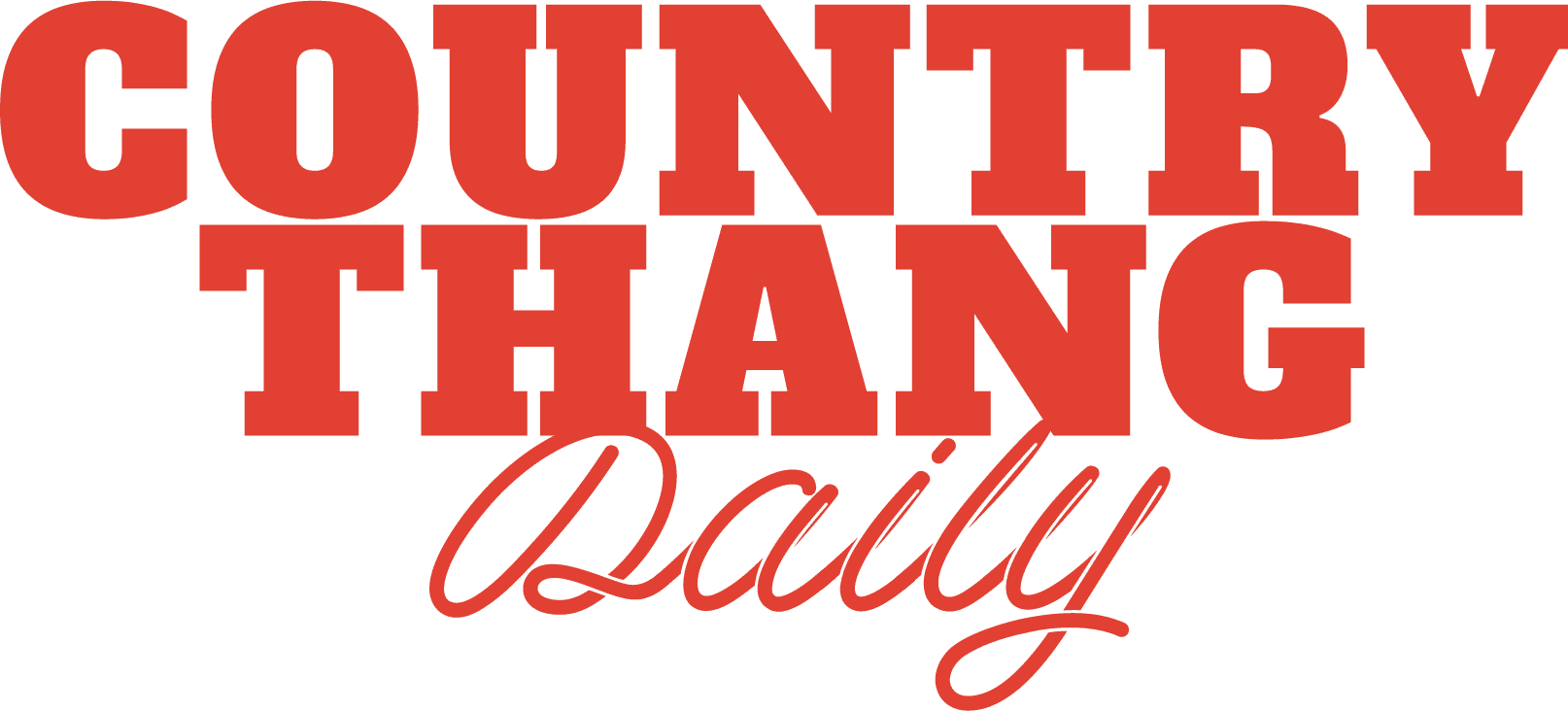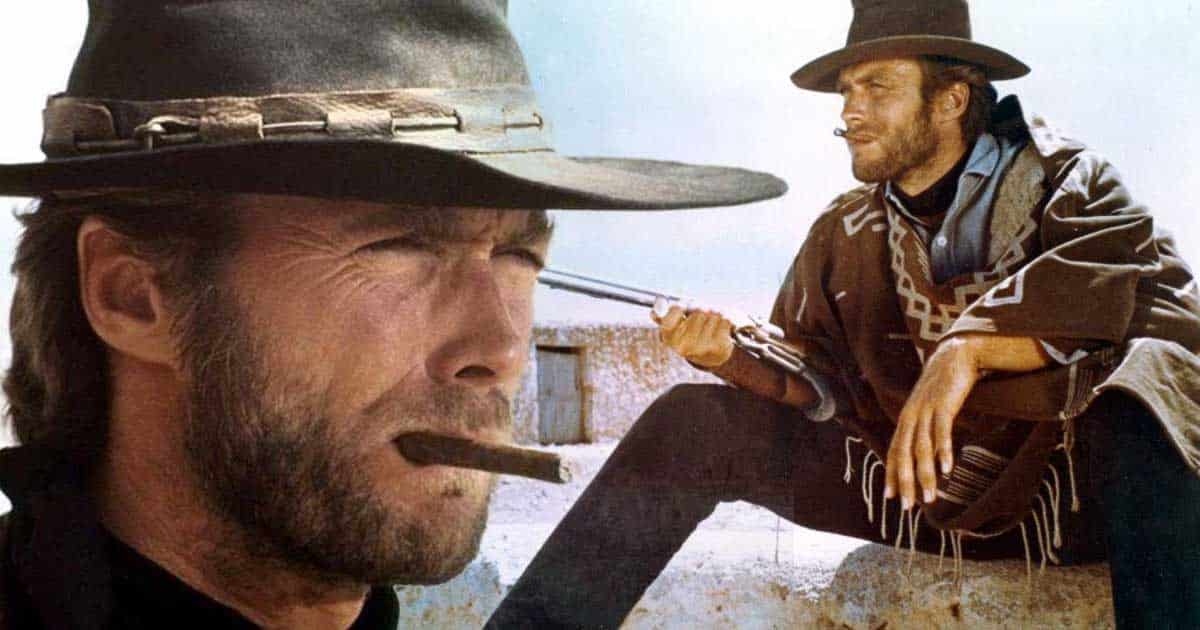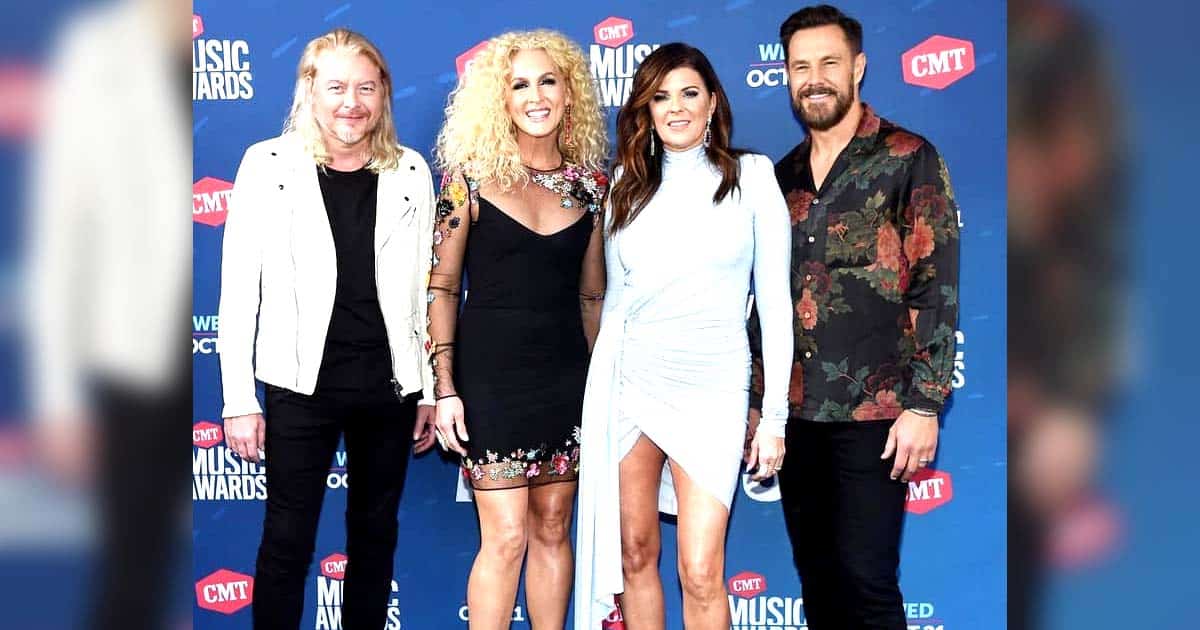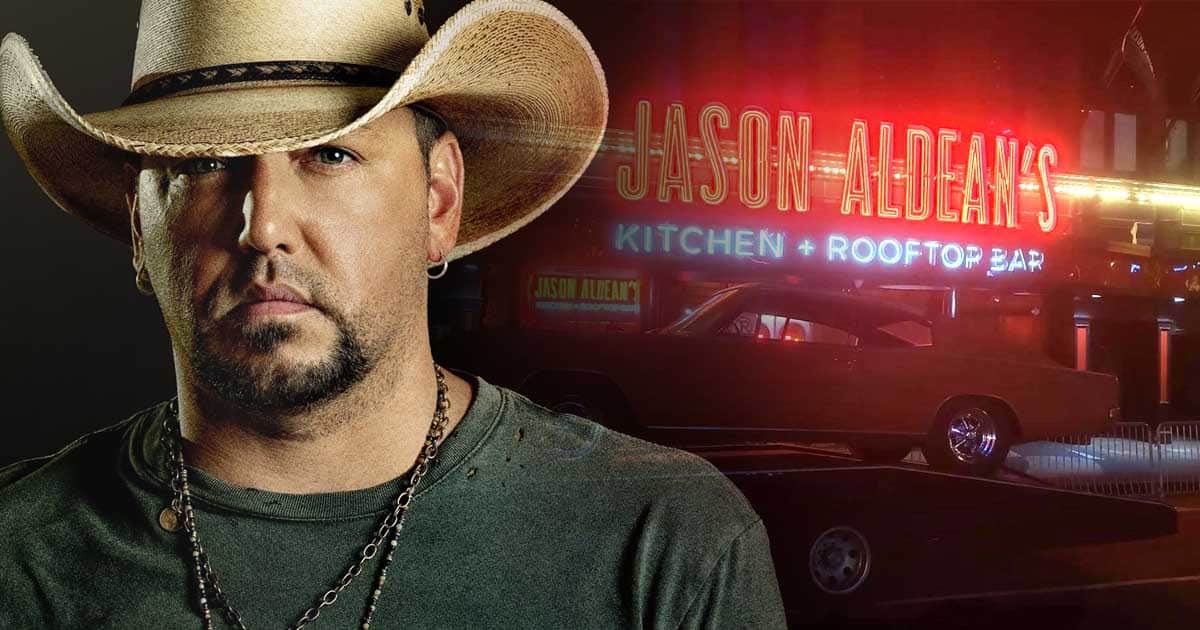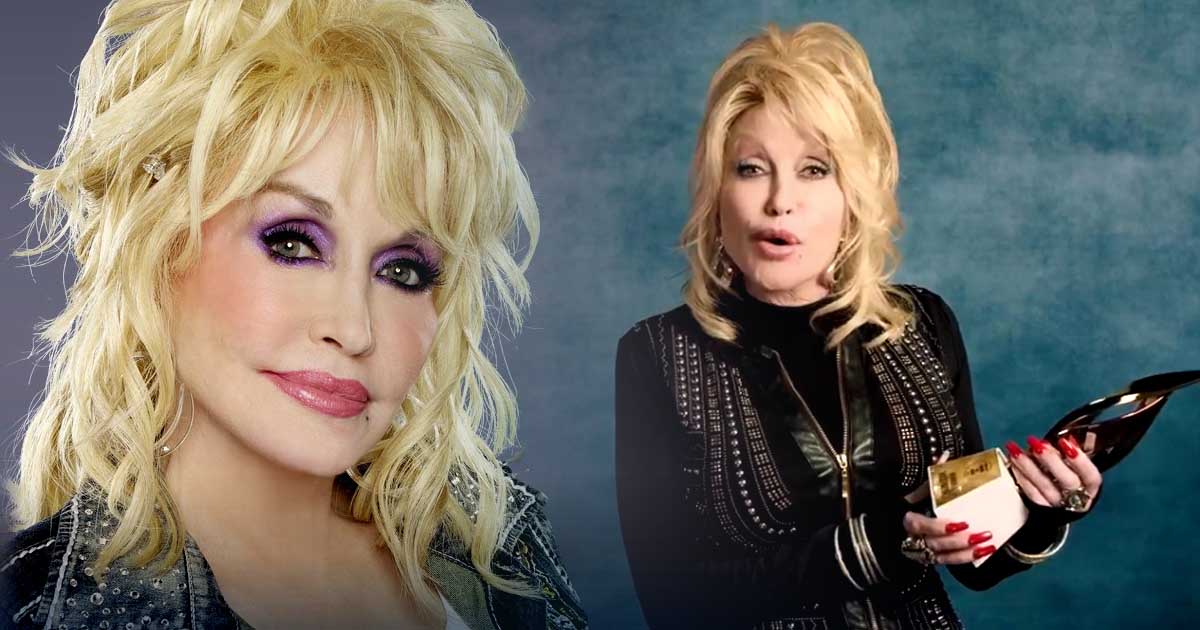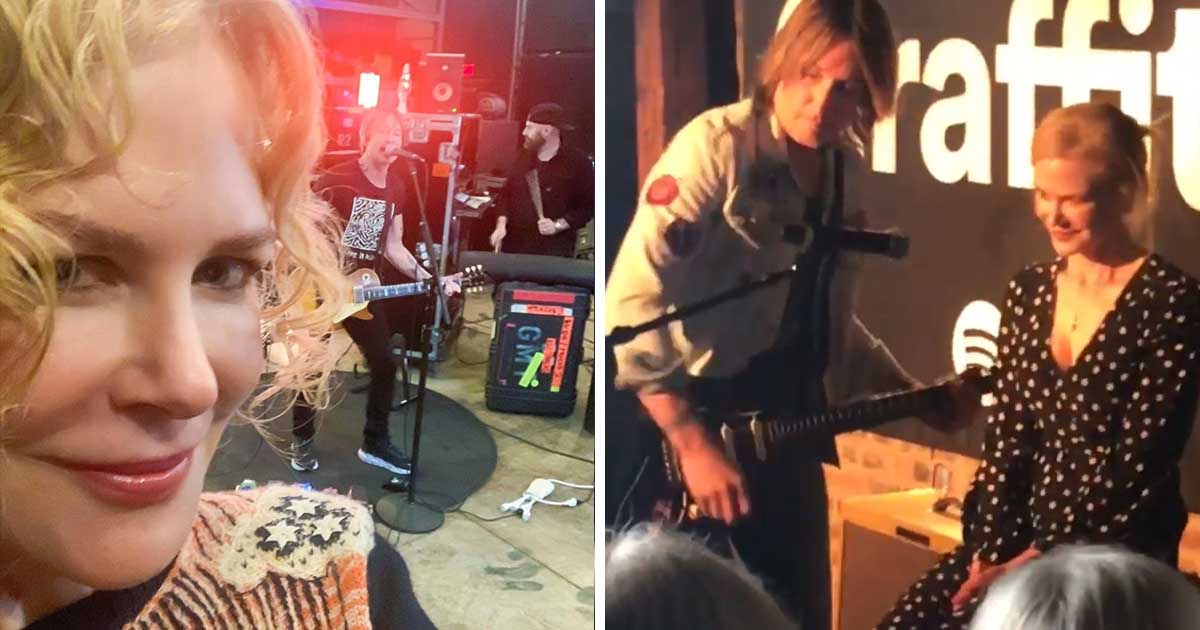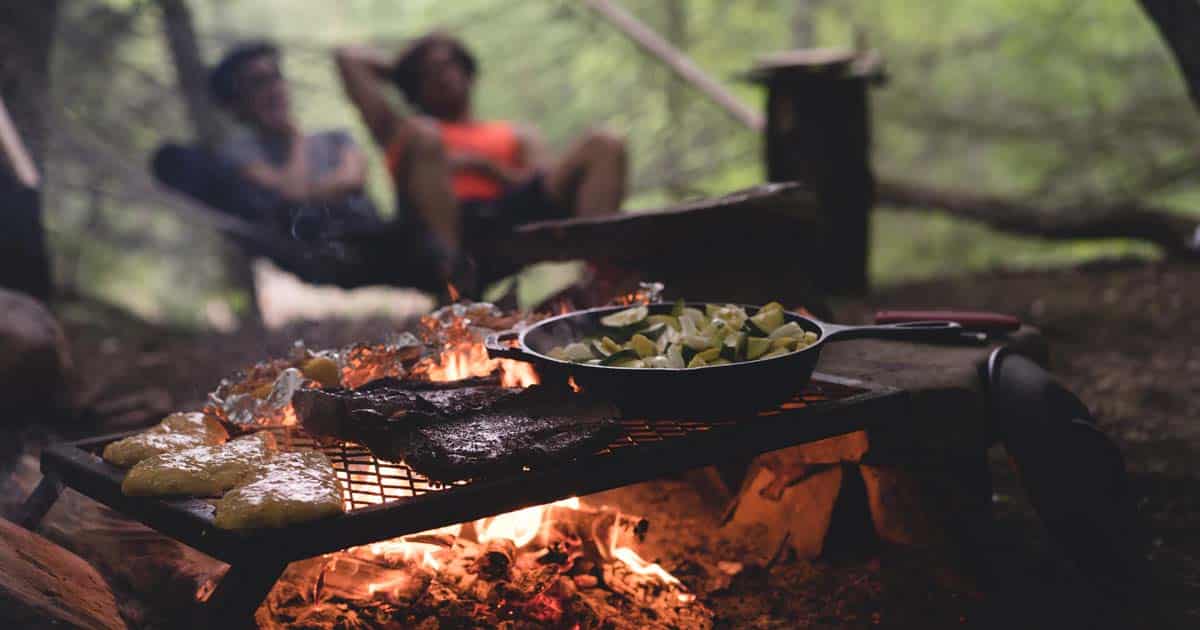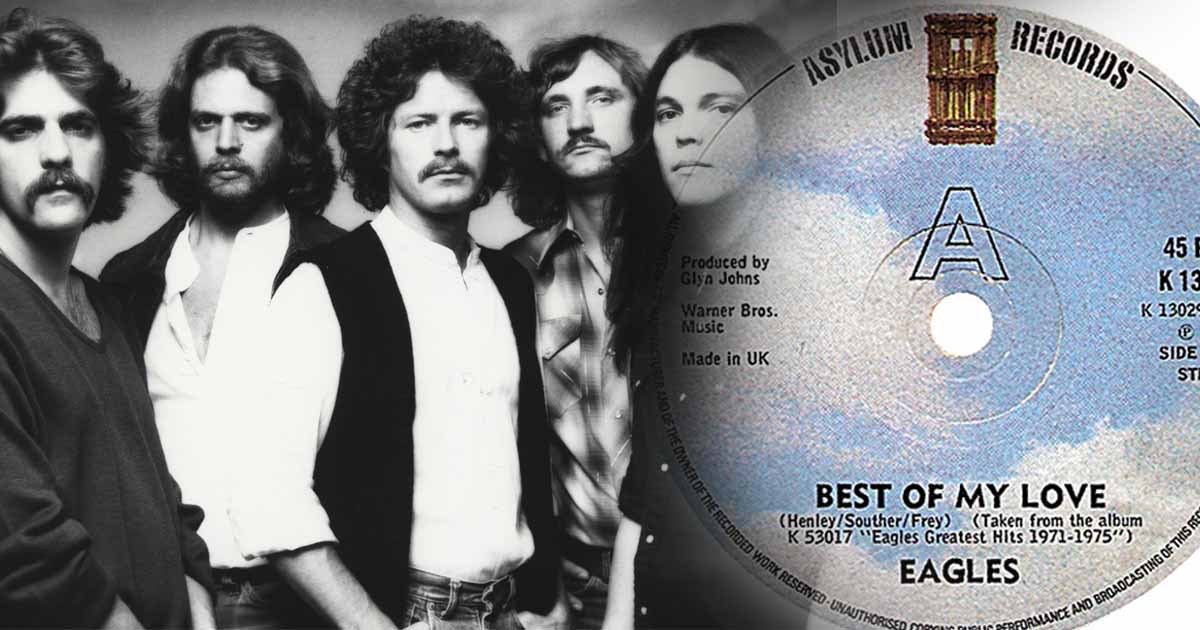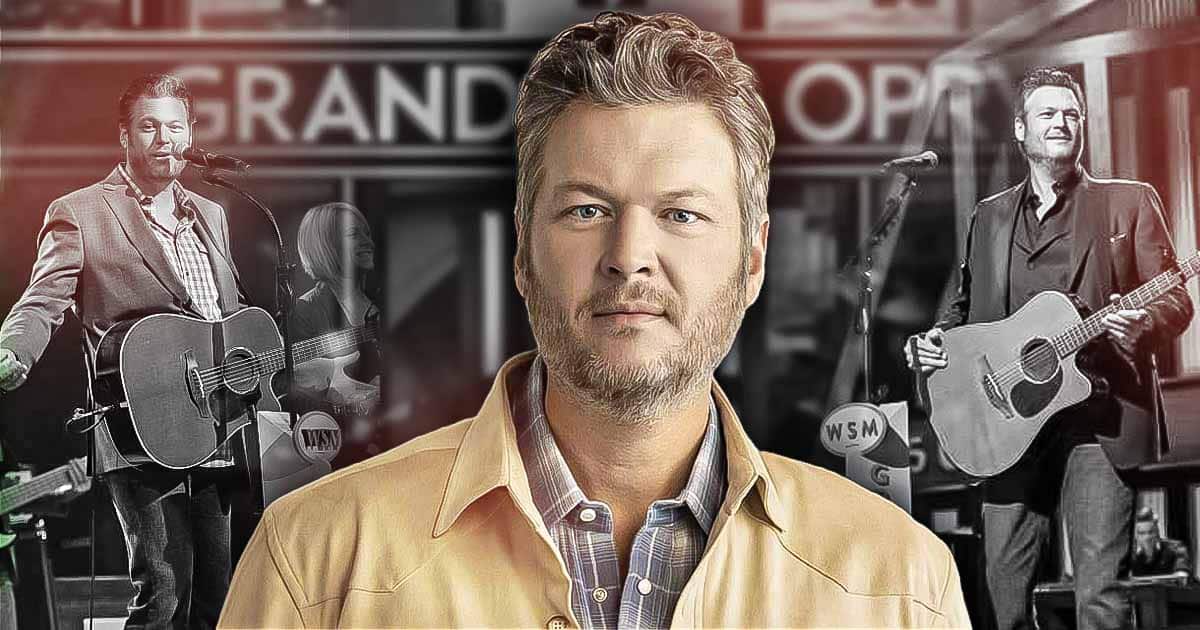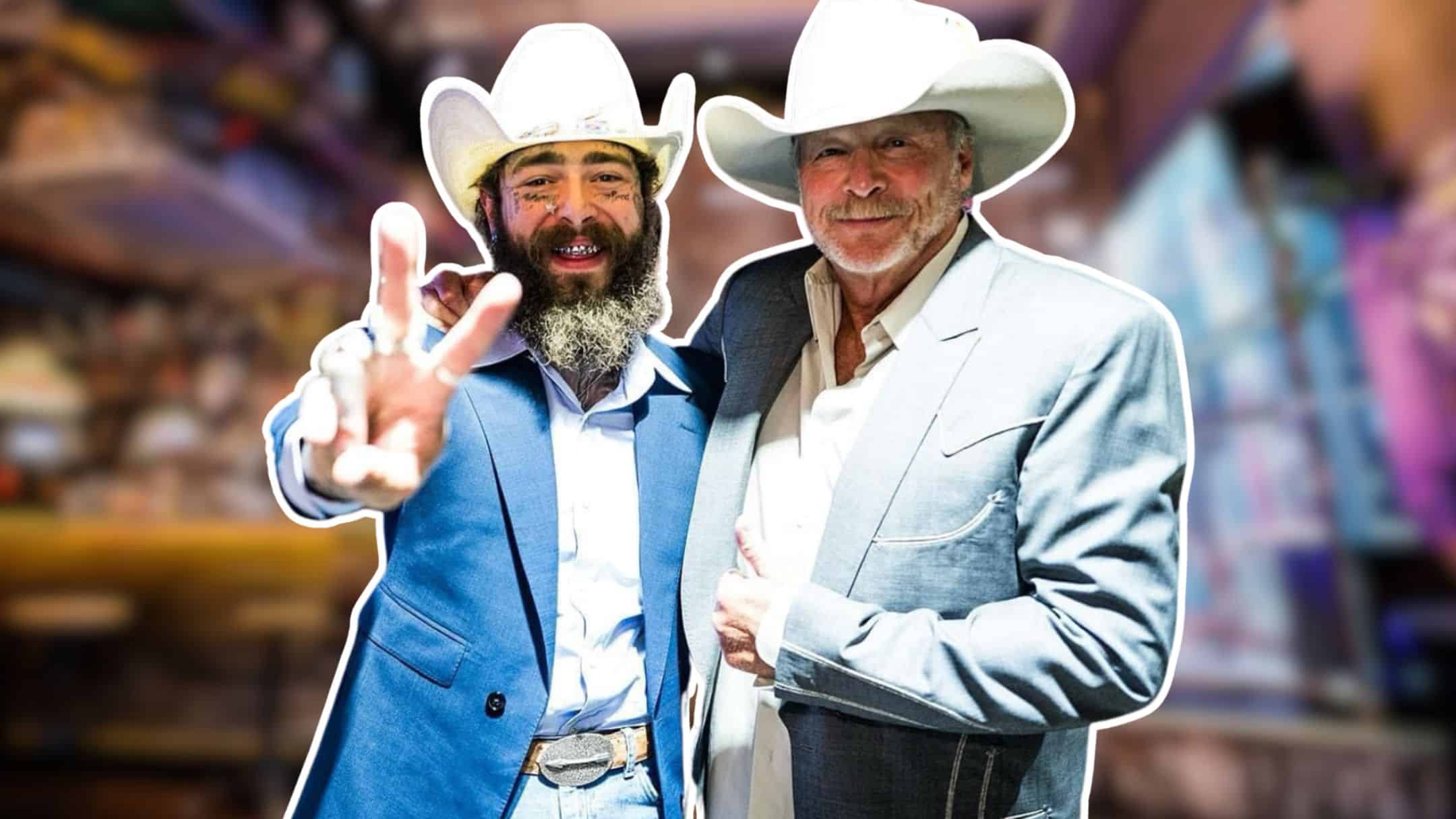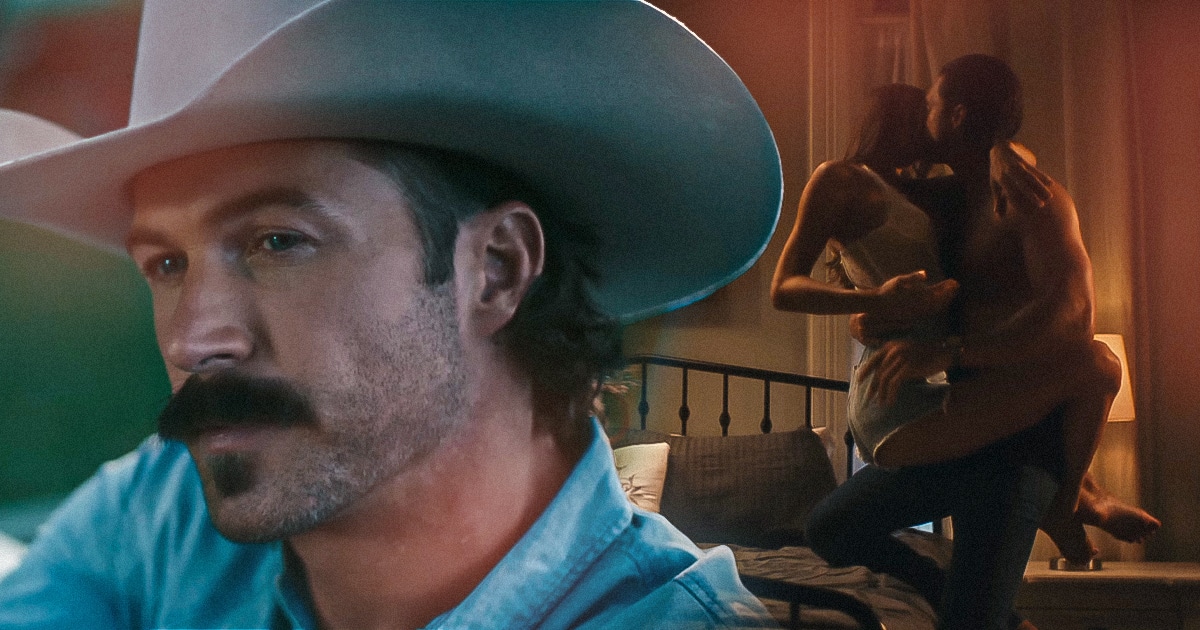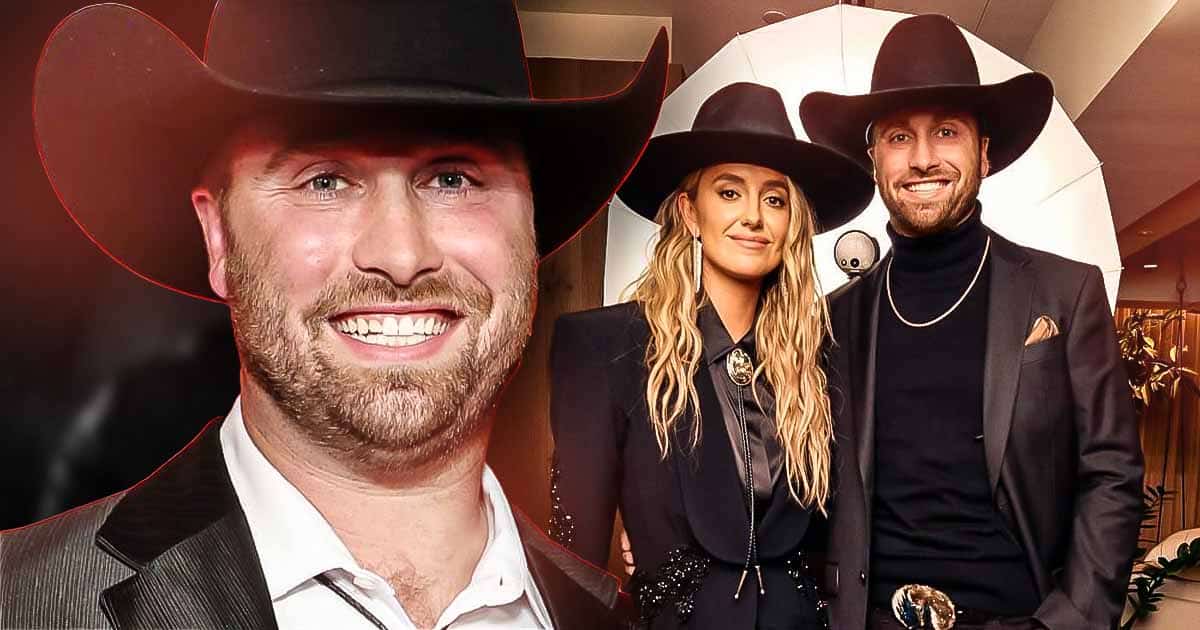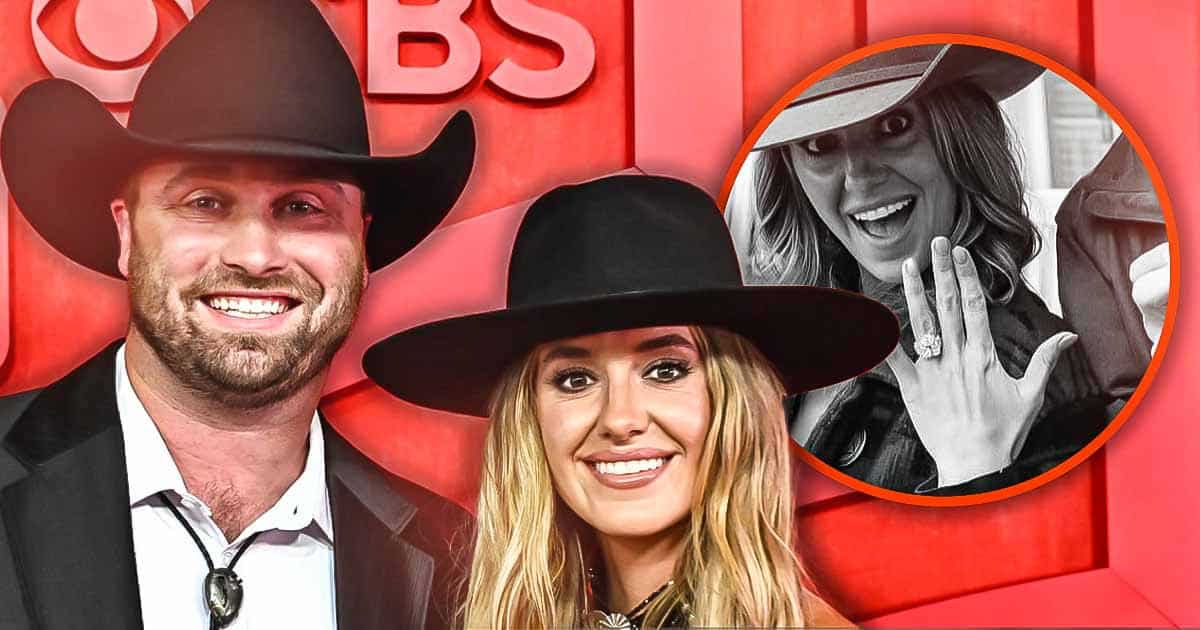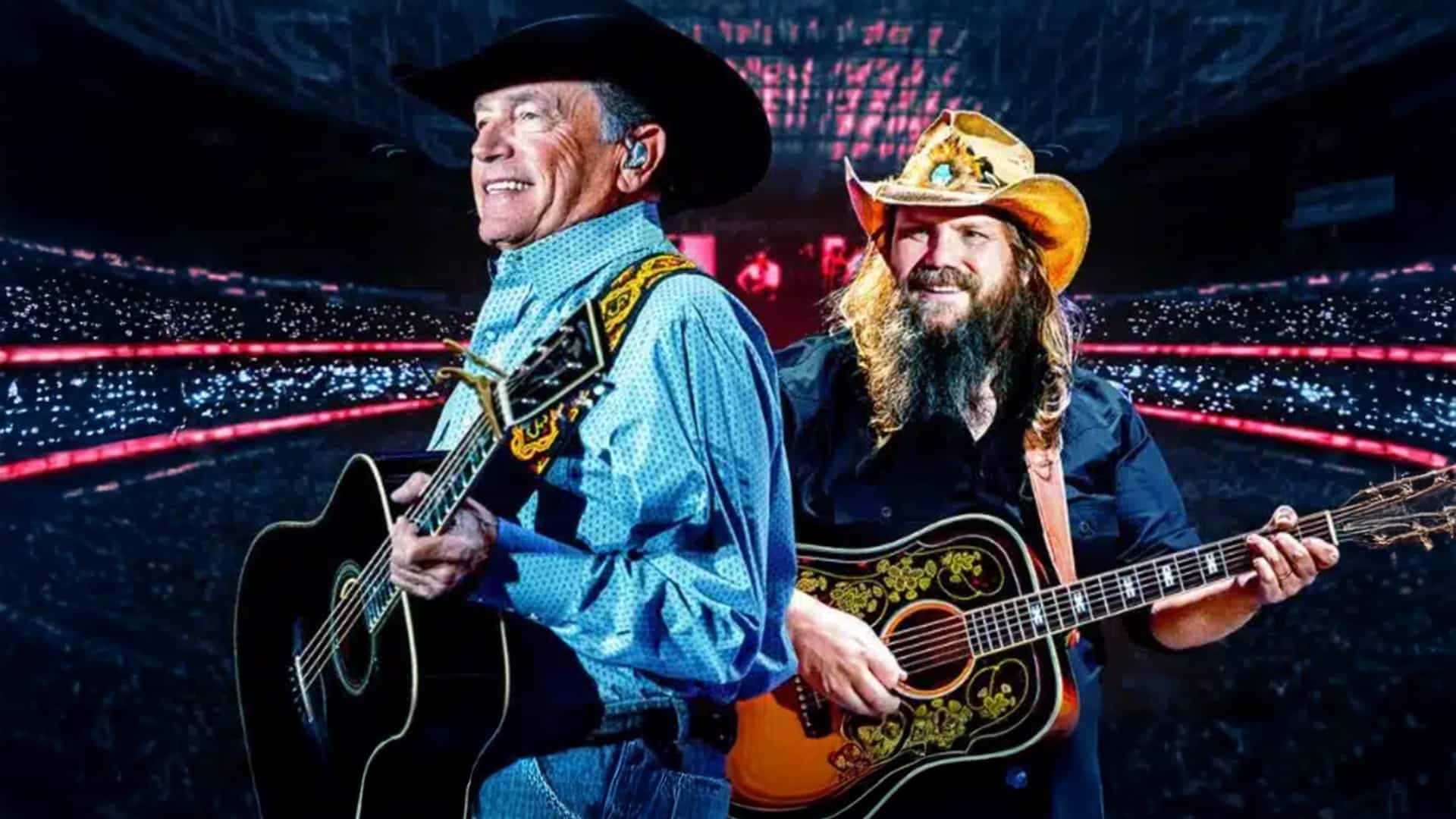Clint Eastwood’s early career started with a series of what became known as “Spaghetti Westerns” made by Italian filmmaker Sergio Leone. The films are titled A Fistful of Dollars (1964), For a Few Dollars More (1965) and The Good, the Bad, and the Ugly (1966).
The series has become known for inspiring the creation of many more Spaghetti Western films. No wonder why the three films are consistently listed among the best rated Western films in history. But what made these three films more interesting were all the gun used by Clint Eastwood’s character, the “Man with No Name.”
Here they are!
Colt 45 Single Action Army, a.k.a “Peacemaker”
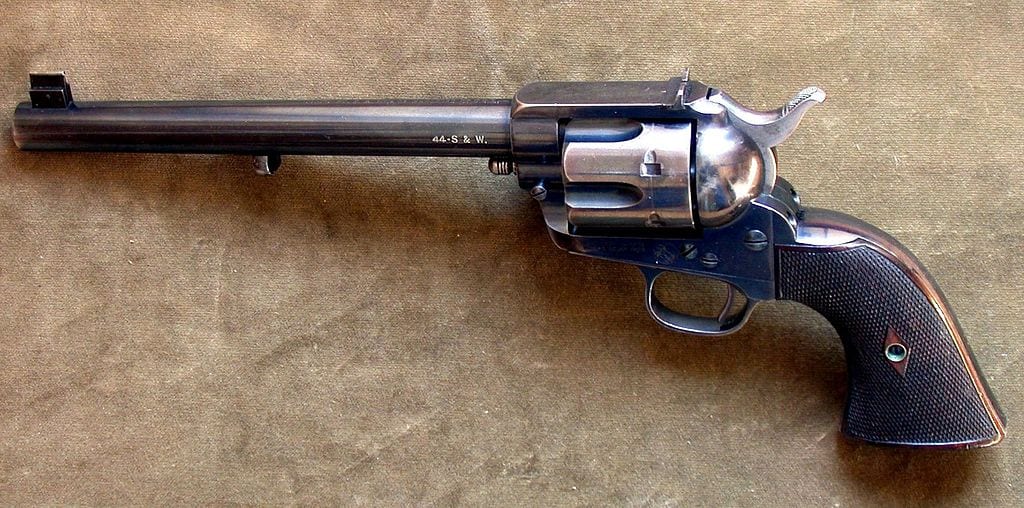
To begin with, Eastwood used just one revolver in the first installment of Dollars Trilogy, A Fistful of Dollars, in 1964. That’s a Colt 45 Single Action Army or known as the Single Action Army or Peacemaker.
This is a single-action revolver that consists of a revolving cylinder that holds six metallic cartridges. It was designed by Colt’s Patent Firearms Manufacturing Company (which is now the Colt’s Manufacturing Company) for the U.S. government service revolver trials in 1872. It was adopted as the standard military service revolver until 1892.
The revolver was popular with lawmen, ranchers, and outlaws alike. Though Colt has canceled its production twice, they brought it back due to popular demand.
Volcanic Repeater
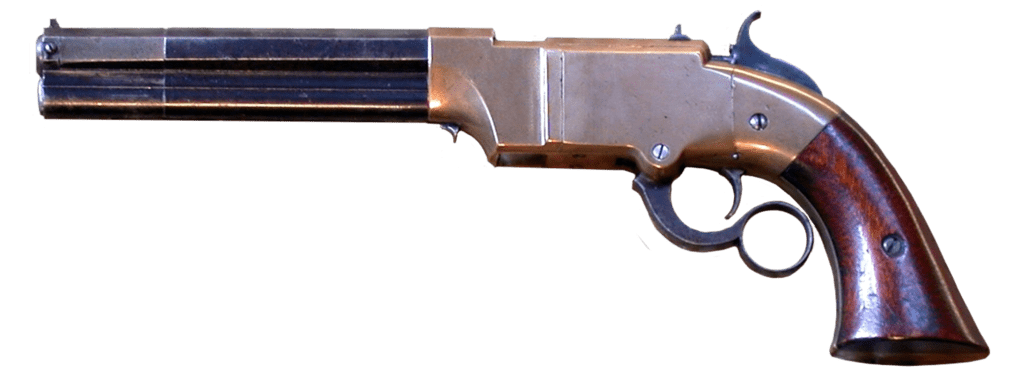
Clint Eastwood returned as the same character in the sequel For a Few Dollars More in 1965. In this film, he carries the same a Colt 45 Single Action Army revolver. However, Eastwood briefly got his hands on a new rifle, one that’s a bit more out of the ordinary than a Henry or Winchester: a Volcanic Repeater rifle.
This relatively obscure gun, manufactured starting in 1853, was a lever-action pistol designed for target shooting. During that time, the weapon was one of the most innovative weapons. It had a very high rate of fire and has a higher capacity compared to its contemporaries.
However, the gun had some shortcomings. It was prone to gas leakage around the breech and multiple misfires. It was also bulky and difficult to operate without using both hands. This was likely the final nail in the Volcanic’s coffin as the company was led to bankruptcy in August 1856.
Still, one of the world’s largest gun companies and the world’s most popular cartridge are here because of this obscure pistol.
Sharps 1874, Winchester 1866 Yellow Boy Lever-Action Rifle, COLT 1851 (Cartridge Conversion)
Eastwood returned for his last, and probably the most famous film with Leone in 1966: The Good, The Bad, And The Ugly. The actor also got more time on a rifle in this film than in either of the others. He used a Sharps 1874 rifle with a ladder elevated sight to sever the rope around a bad guy’s neck as he was hanged in a graveyard as part of a bounty scam they’ve been running under a loose agreement.
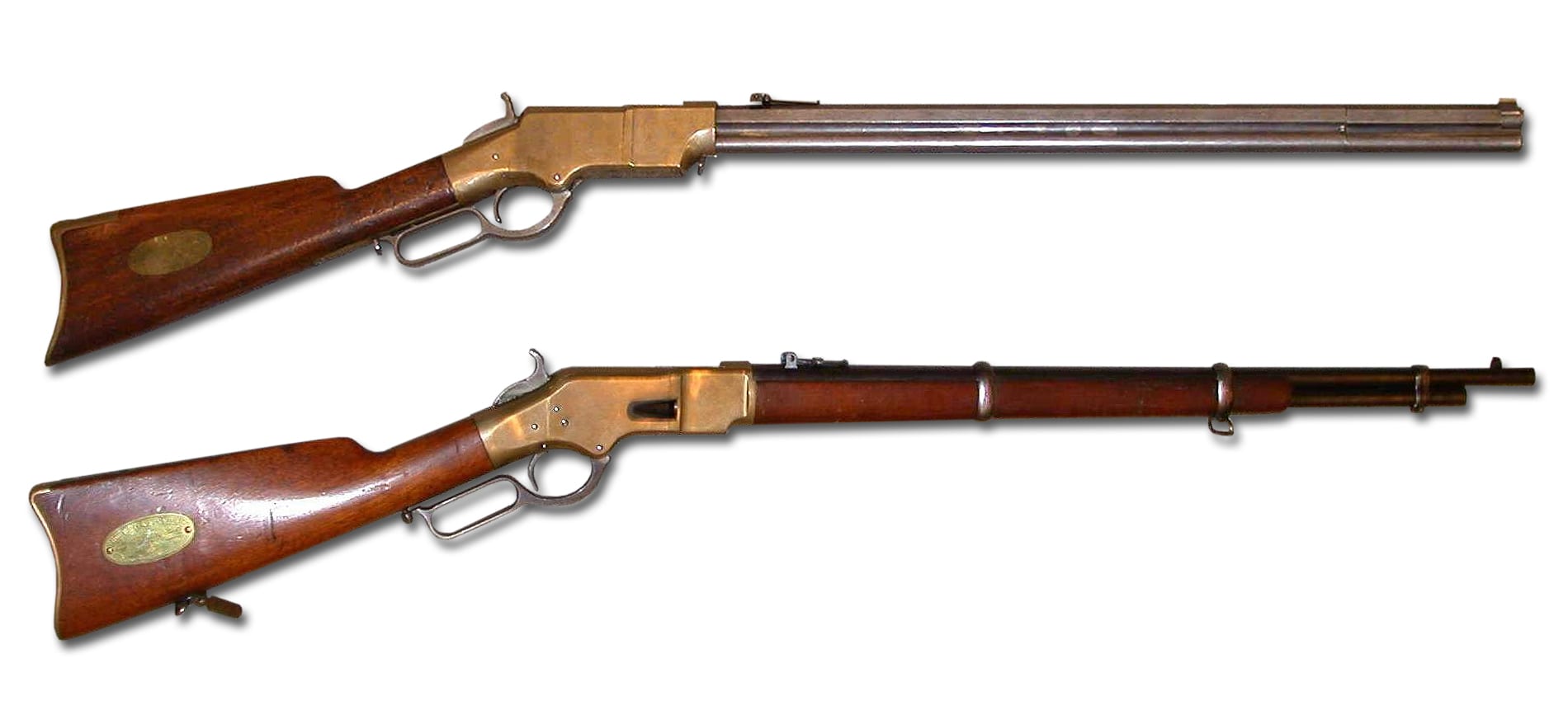
Later in the film, Eastwood used a Winchester 1866 Yellow Boy lever-action rifle to make the same shot, though he only skimmed the rope with the first shot. The wooden forend of the gun has been removed to make it appear like a Henry 1860 rifle, but you can tell it’s a Winchester because of the loading gate on the receiver’s side. On a Henry, the cartridges were loaded at the front of the magazine tube. There was also no magazine tube loading break switch, which would be present on a Henry of that era.
Though his revolver still has a silver coiled snake on the grip, it has become a larger Colt 1851 Navy cartridge conversion revolver in this film.
